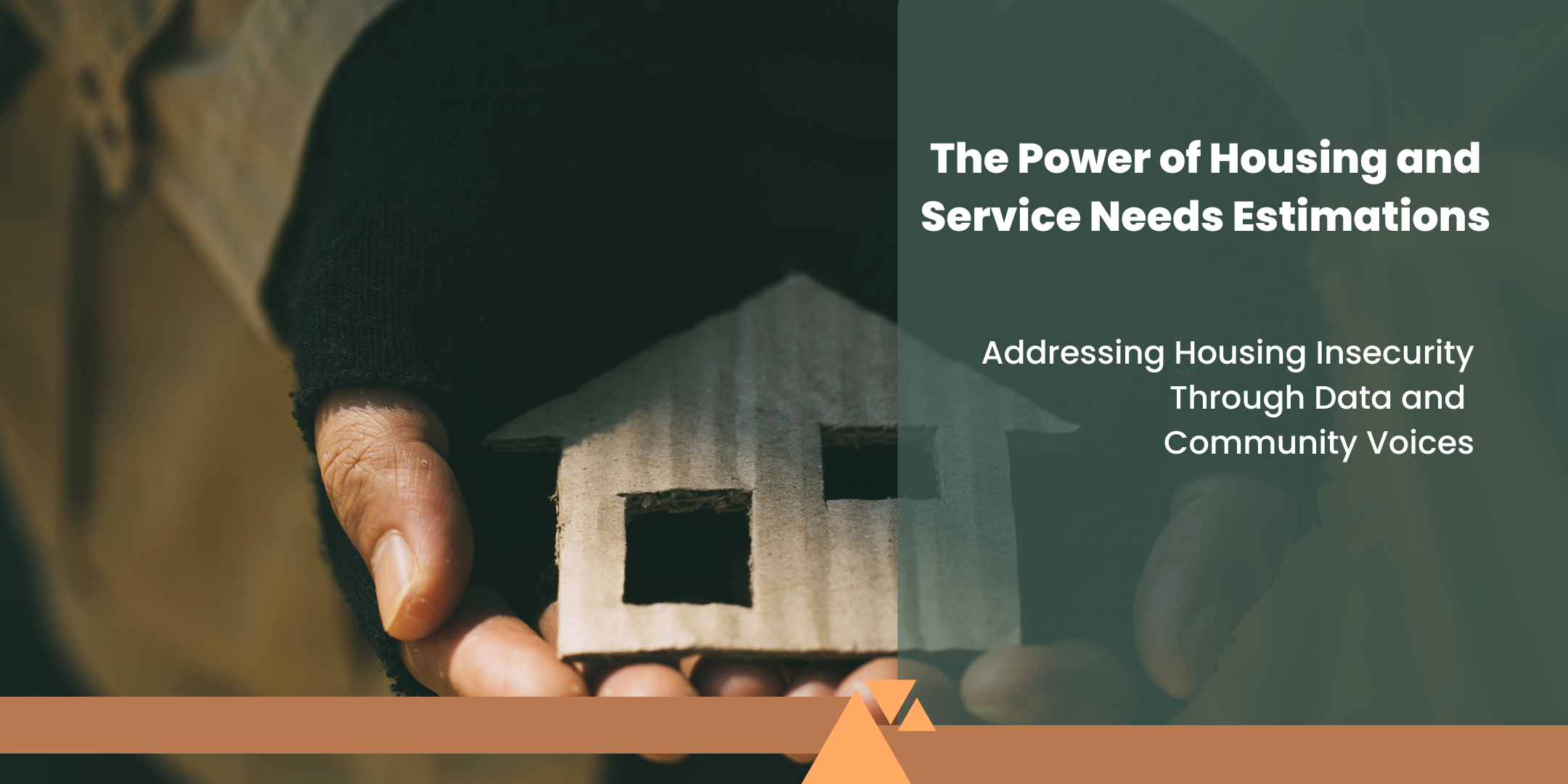
Blog: The Power of Housing and Service Needs Estimations
 May 14, 2025
May 14, 2025
 Homelessness
Homelessness

 May 14, 2025
May 14, 2025
 Homelessness
Homelessness

When we think about homelessness, we often picture what we see in urban centres, people sleeping rough in parks, shelters, or on busy city streets. This “urban lens” has dominated the national conversation, leading many to believe that homelessness is primarily an urban issue.
But that’s only part of the story.
In rural, remote, and Indigenous communities across Alberta and throughout Canada, homelessness looks very different. It’s often invisible. It’s a family of six crammed into a relative’s two-bedroom home. It’s a young person couchsurfing for months. It’s someone sleeping in their vehicle because there’s no shelter, nowhere else to go, and no one to help. This is the reality of hidden homelessness, and it’s happening at rates equal to or even higher than what we see in cities.
And yet, it remains largely misunderstood, underreported, and unaddressed.
Rural, Remote, and Indigenous communities face unique challenges: limited access to emergency shelters, a lack of affordable housing and public transportation, stretched-thin service providers, and chronic underfunding.
On top of this, there’s a critical lack of reliable, localized data. Without data, rural communities are left out of funding and policy decisions that could bring about real change. They fall through the cracks not because their issues aren’t important, but because those issues aren’t visible.
That’s where the Rural Development Network (RDN) can help.
Driven by community need, RDN developed the Housing and Service Needs Estimation methodology, an approach specifically designed for rural, remote, and Indigenous communities to collect homelessness data.
This survey-based population estimation approach works with local service providers (like libraries, post offices, health centres, food banks, FCSS offices) to gather data over a 30-day period. It’s collaborative, community-driven, and tailored to the realities on the ground. And it’s not just about data, it’s about empowering communities to lead their own responses to housing insecurity.
Since 2018, RDN has supported three successful Alberta Provincial Housing and Service Needs Estimations, most recently in 2023, where they found that 7,320 individuals across 45 rural communities were experiencing housing insecurity. Of those experiencing housing insecurity, 91% were Indigenous.
In preparation for the next Provincial Estimation in Fall 2025, over 25 Alberta communities have already expressed interest in participating. These communities know what’s at stake, and they know that data is the first step toward solutions that work for them.
RDN doesn’t just collect data and leave. They work alongside communities through every stage: from developing localized surveys, to training service providers, to analyzing the results, to supporting advocacy and policy change. The goal? Build long-term capacity so communities can continue this work independently, long after the project ends.
And it’s working. In every case, communities participating in Housing and Service Needs Estimations have seen positive outcomes. Whether securing funding for an emergency shelter program, repurposing an old motel into transitional housing, implementing culturally grounded supportive housing, creating a Housing and Homelessness Task Force, or conducting education and engagement sessions on housing insecurity with community, service providers, and municipal council, communities are using their data to drive meaningful change. This kind of impact is only possible when communities have the tools and information they need to make informed decisions and when they’re supported to take the lead.
The Housing and Service Needs Estimation doesn’t just fill data gaps, it creates a roadmap for systemic change. It gives rural, remote, and Indigenous communities a voice in decisions that affect them. It ensures that policy-makers at all levels of government understand the realities of rural homelessness, so funding and services can be equitably distributed.
RDN’s approach fills that gap; building networks, breaking siloes, and ensuring that people with lived experience of housing insecurity are at the heart of the conversation.
On May 1st, 2025, RDN launched the official Call for Applications for communities to participate in the next Alberta Provincial Housing and Service Needs Estimation, with data collection occurring in October 2025. From beginning to end, the project will span 10 months – 10 months of collaboration, learning, data collection, and action.
And at the end of it, rural, remote, and Indigenous communities will have something they’ve long struggled to access: the evidence they need to advocate for themselves.
Because no one should be invisible. Not in cities. Not in small towns. Not anywhere.
November 3, 2025
Homelessness, News Release
NEWS RELEASE FOR IMMEDIATE RELEASE Nov 4, 2025 Edmonton, Alberta – November 4, 2025 – The federal government has allocated funding that will allow the Rural Development Network (RDN) to distribute approximately $4.8 million over the next two years to Alberta’s rural, remote, First Nation, Métis Settlement, and Métis communities through the Reaching Home Rural […]
ViewAugust 12, 2025
Homelessness, News Release
Canada – August 2025 RDN is set to launch its Provincial Housing & Service Needs Estimation this October, a critical initiative aimed at better understanding housing insecurity across the province. From October 1 to 31, 2025, 21 organizations and municipalities representing over 64 rural, remote, and Indigenous communities will participate in collecting localized and regionalized […]
ViewHomelessness
Alberta Provincial Estimations
Following a city council meeting presentation by the Rural Development Network (RDN) about the first-ever homelessness study in the city, more details have been released. According to a release from city officials, the Homelessness Estimation Survey will be launched next week on Monday, March 11. “Continuing to foster and build a caring community is one of our […]
View